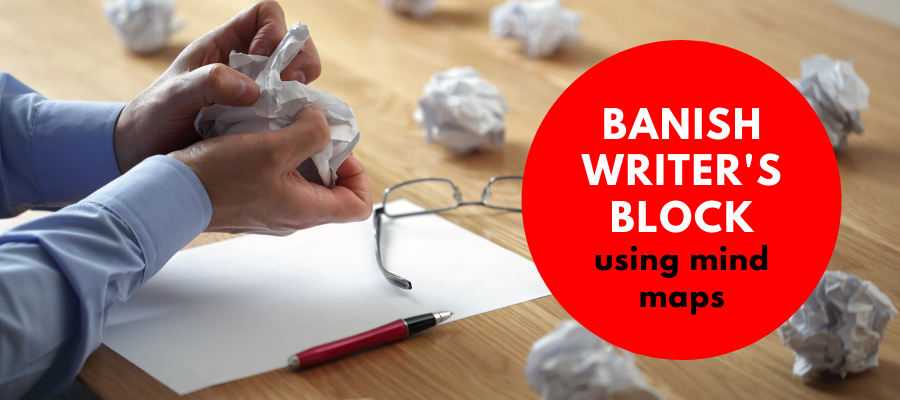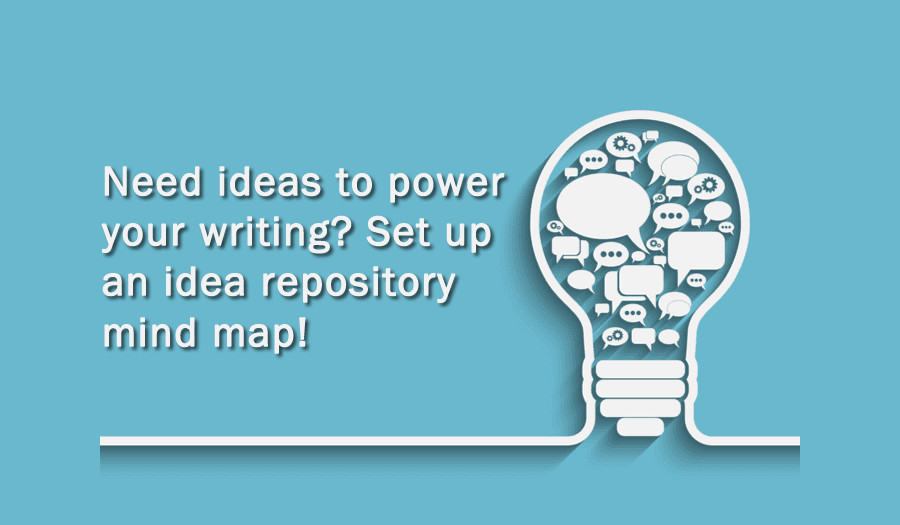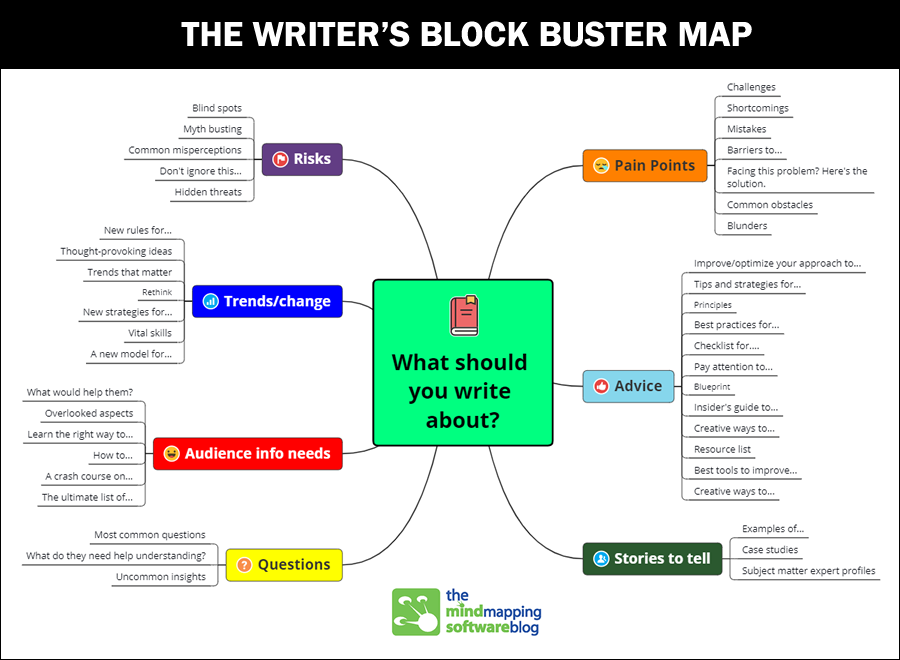
If you’re faced with writer’s block, why not use an approach to break out of it that leverages your mind’s natural strengths?
Why not create a mind map?
This visual approach gives writer’s block a knockout punch because it leverages your brain’s powerful associative capabilities. Here’s what I mean: Let’s say I ask you to think about objects that are colored RED. Immediately, your brain generates dozens of associations: Stop lights, apples, bouncing balls, a matador’s cape.
You get the idea.
Mind mapping works on the same principle.
When you write or enter a topic into your mind map, it acts as a catalyst. Your brain naturally “spiders” out ideas and concepts that are related to it, which you can capture in the mind map’s skeletal, visual format. You can keep these associations going as many levels deep as you wish.
It’s a friction-free way to capture ideas quickly, and then expand them in any way you like. It’s especially helpful for lateral thinking – literally, “thinking sideways.” In other words, removing the blinders from your thinking. Leaping beyond your habitual, rutted paths of thinking into more creative perspectives. Divergent thinking.
How can this help you crush writer’s block? Here’s how it works in two different scenarios:
Scenario #1: If you can’t think of a topic to write about
The solution to this type of writer’s block is to create a mind map in which you capture your content ideas when they DO flash into your mind.
Think of it as a visual idea repository.
You can use the branching structure to group your ideas by type, project, priority (“these are the ideas I want to write about first!”) or any other classification scheme you want.

When you’re ready to write, open up your idea map, select one of the topics it contains and start writing.
Writer’s block, begone!
In a recent blog post, writer Jeff Goins talks about how he captures ideas as they occur to him in an app called Drafts, which links to Evernote. He then creates rough first drafts, approximately 500 words long. He then walks away from them, and returns to edit them later. Rather than all of this unfinished writing causing him tension, he explains that it’s actually liberating – because he can return to any one of these ideas or drafts at will and simply continue to develop them.
It’s a potent antidote to writer’s block.
I work the same way, and find it to be exciting to return to an idea I captured weeks or months ago, and move it to the next step. Goins says this system causes him to NEVER run out of things to write about. I completely agree.
What I’m suggesting that’s unique is to use a mind map for the starting point of this process – the idea file.
As you periodically view your mind map of writing ideas, its visual format will cause new ideas to pop into your mind, which you can also capture. These could be additional details for existing ideas, or totally new ones.
It’s a powerful medium in which to work because it does such a great job of leveraging your brain’s associative capabilities.
By the way, this DOESN’T WORK with linear capture tools like Evernote, Notion, Drafts or Google Docs.
One final surprise: Mind mapping software enables you to do a brain dump, without being concerned about how your ideas are arranged. Once you’re done capturing the output of your creative muse, you can organize and reorganize its topics at will. Try THAT with any other type of software!
My gift to help you jump-start your thinking
To help you jump-start your thinking, I have created what I call the Writer’s Block Buster Map. It contains over 40 prompts to help you generate content ideas. It’s based on a swipe file of attention-getting content topics and headlines I’ve been collecting for several years.
Think of each word in this mind map as an “idea seed” – a catalyst to get you thinking in new directions.

Download the Writer’s Block Buster Map here:
Select a word at random and spend a few minutes thinking about how you can use it as the basis for your writing. If you come up with something, add it to the map as a sub-topic. If it doesn’t prompt any ideas, select another word.
I think you’ll find your brain literally lighting up with ideas in a matter of minutes.
Scenario #2: Fleshing out an existing topic
The second scenario happens when you know what you want to write about. But you’re having trouble outlining and expanding your idea into something cohesive and compelling.
In this case, the mind map enables you to think laterally – in all directions. If you can’t think of any ideas to get your thinking started, try these simple steps:
- Capture what you know about the topic. Don’t get wrapped up in how to structure it within the mind map. Remember: Capture first, organize later.
- Do a Google search to find out what else has been written about your topic. Catalog the links in one branch of your mind map. You can title it “Research.” Then, invest some time extracting the key thoughts from each source. Add them as sub-topics to your map. Then add your own “spin” on the topic. Look for aspects that other authors HAVEN’T covered. Can you be a contrarian, or highlight something the others may have missed? What’s your unique angle? Capture your ideas about possible angles and approaches in your mind map, too.
- Next, capture any questions you have about the topic. What do you need to know? What potential sources could you check out? Who are the key subject matter experts you could contact for additional insights? Add all of these to your mind map, too.
- As you flesh out your mind map, look for holes in your information. What’s missing? What do you still need to know? Put yourself in the shoes of your reader. What do THEY need to know about this topic? How can you challenge their thinking (which is a key part of getting their attention)?

Before you know it, you’ll have a mind map full of rich information and ideas that you can then convert into a cohesive and complete outline. From there, it’s a simple matter of exporting the contents of your map to your favorite word processing application or blogging platform for further development.
As you can see, mind mapping is a powerful way to banish writer’s block. Why not give it a try?


Leave a Reply